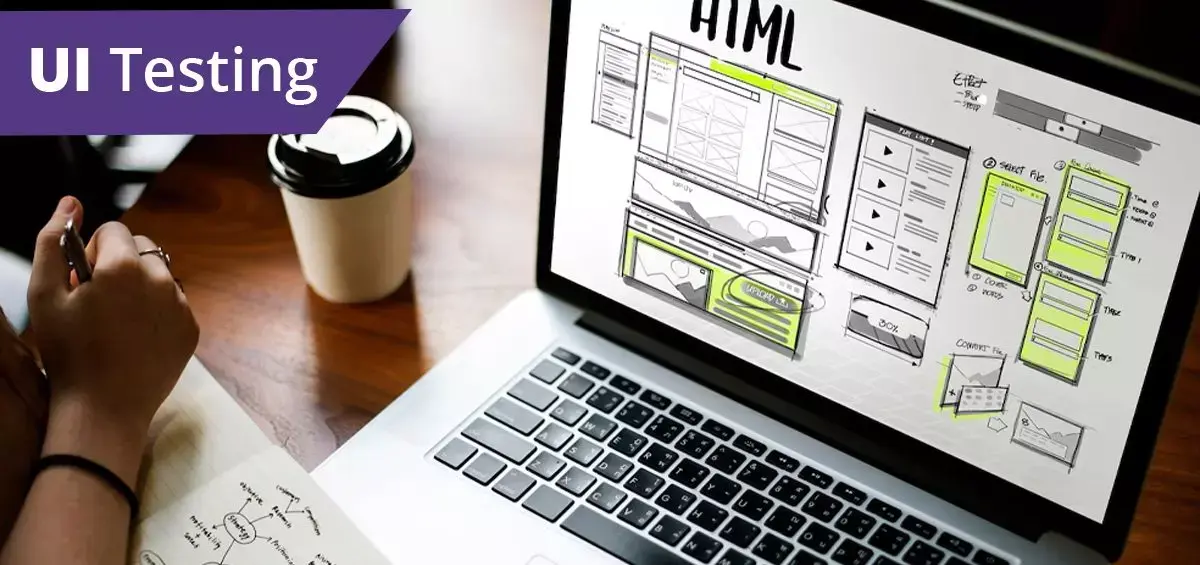User interface (UI) testing is an essential part of the software testing cycle. In UI testing, all interface components are tested to validate if the applications have the expected functionalities and if they are user-friendly. In this way, the tester gets to ensure not only the quality of the application but also the comfort of the user while using the application.
UI testing typically involves testing the visual components to see if they meet the expected functional and performance requirements.
This translates into testing all visual indicators and graphical icons, such as radio buttons, checkboxes, text boxes, toolbars, fonts, menus, colors, fonts, and more. UI testing can be performed manually or with an automated tool.
Table of Contents:
- Reasons for UI Testing
- Approaches to UI Testing
- Challenges in UI Testing
- UI Testing Checklist
- Conclusion
Reasons for UI Testing
UI testing is relevant for two reasons: First, checking how the application manages user actions undertaken using the mouse, keyboard, and other input devices. Second, check whether the visual elements are displayed and working correctly. This helps the organizations ensure that the applications meet their functional requirements and also that the end-users will use them with comfort and ease. Therefore, UI testing plays a significant role before the release of a production application.
The following are checked in UI testing:
- Functionality
- Usability
- Visual Design
- Performance
- Compliance
Approaches to UI Testing
- Manual testing: A tester performs a set of operations to check if the application functions properly and if it conforms to the specified requirements. In this testing, the tester has to manually use all the features of the website or app to check for discrepancies. This is feasible if the software has a limited number of UI elements, which is usually found in the initial version of a website or app. However, this is not possible towards the closing stages, when thousands of UI elements need to be verified. Manual testing is therefore time-consuming, highly prone to human error, inefficient, and has very poor test coverage. Also, the test coverage is very low. The quality of testing in this method depends entirely on the knowledge and skills of the testing team.
- Automated testing: In this testing, tests are done faster, which is useful to meet user expectations of speed. For instance, with automated Selenium testing, the software can be put through multiple test scenarios, and the same tests can be run repeatedly, even with different variables, if necessary: all this can be done quickly and correctly. Also, these tests are not prone to human error. Multiple tests do not cause exhaustion either. The accuracy of the test results is purely dependent upon the correctness of the test scripts and the usage of the right tools. Test automation frameworks also automatically record results and share them with the team once tests are done. UI tests should be performed on multiple device-browser-OS combinations. And, instead of manually running UI tests on multiple devices and browsers, the testers simply need to design test cases that do the same.
- Record and replay testing: This testing is executed using automation tools. The automated UI testing tool records the actions and interactions with the application and then reproduces them and compares them with the expected behavior. The replay phase is repeated for further testing.
- Model-based testing: In this, graphical models are built that describe a system’s behavior. As this provides a deeper understanding of the system, it leads to the generation of efficient test cases. In the models, the inputs and outputs of the system are determined, which in turn are used to run the tests. The steps of this testing are:
-
- Creating a model for the system
- Determining the system inputs
- Verifying the expected output
- Executing tests
- Checking/validating system output vs. the expected output
This model excels because of its high level of automation and greater test coverage.
Also Read: A Beginner’s Guide to UI and UX: What You Need to Know
Challenges in UI Testing
While performing UI tests, testers face many challenges which include but are not limited to the following:
- Continuous upgrades: Upgrading constantly to accommodate new features and functionalities means performing comprehensive UI tests is challenging.
- Increasing complexity: Modern applications have highly complex features such as complex flowcharts, maps, embedded frames, diagrams, and other web elements. This in turn makes UI testing more challenging.
- UI tests become time-consuming: Typically, creating effective UI test scripts and executing the tests is time-consuming.
- Maintaining the test scripts: When developers make changes to the user interface, it becomes challenging to maintain the UI test scripts.
- Multiple error handling: While performing complex UI tests, especially under tight timelines, testers are preoccupied with creating scripts, and fixing errors during the testing becomes a challenge.
- Computing the ROI: As the UI keeps changing, so do the tests. This in turn causes the amount of time spent on UI testing to spike, consequently delaying the delivery process. And, eventually, it becomes very challenging to calculate the ROI for continuously performing UI tests.
Here are some ways to overcome these UI testing challenges:
- Selecting the right UI test automation tool: Choosing the right automation tool that, first and foremost, blends seamlessly with the workflow is recommended. Also, it should be low maintenance, it should have record/playback capabilities and defect tracking capabilities, and it should support reporting.
- Automation tools without codes: By leveraging the power of codeless automation testing tools, developers, and QA one can avoid repeating changes in the test code.
- Using a shared repository: To reduce test maintenance and its costs, a shared repository can be used.
- Organizational coding culture and review standards: Organizations should train their teams on the most efficient test automation practices so that there are specific criteria for code review or modifications across the enterprise.
UI Testing Checklist
Here is a checklist of tests (though not exhaustive) to enable testers to test the interfaces thoroughly.
- Data type errors: Ensure that only valid data can be entered for specific data types: e.g. currency, dates, etc.
- Set field widths: If a certain text box permits only a specified amount of characters, then let it be known clearly on the user interface.
- Navigational elements: Check if all the navigational buttons are working correctly and if they redirect the users to the correct screen.
- Progress bars: If displaying screens that take time to load or give the results, a progress bar needs to be used to show the user that a process is still running.
- Type-ahead: If the UI has drop-down lists, then type-ahead is a must. In a drop-down menu with several items, typing the first letter should skip to items beginning with that letter so that the users need not check through a long list.
- Scrolling of tables: If data in your tables extends to another page, then the scroll function should let the users scroll down the data while keeping all the headers intact.
- Log errors: Suppose there is a fatal error in the system, the application should log the error for review.
- Menu items on display: Ensure that the application displays valid menu items that are available.
- Working shortcuts: If the application supports shortcuts, check if they work well across multiple browsers, platforms, and devices.
- Confirm action buttons: There has to be a working/active confirm button whenever the user saves or deletes an item.
Besides testing individual elements, it’s equally important to do UI testing to verify the most important end-to-end processes to ensure that the code is working as it should be.
Conclusion
UI testing, or GUI testing, is a technique that tests all those features of the software that a user would interact with. The quality of the user interface determines whether the user will continue with the website or application and also return to it. Thus, UI design and functionality can make or break the software, and it is no wonder that developers and testers are increasingly focusing on UI testing.
At Hurix, our experts evaluate the features of any software, including visual elements like menus, radio buttons, checkboxes, text boxes, toolbars, colors and fonts, and many more. Testing for UI is done by hand or using an automated testing tool to verify that they are functioning according to requirements – in terms of functionality and performance. We test all visible indicators and icons that are graphical such as menus, radio buttons, checkboxes, text boxes, toolbars, colors and fonts, and many more.
To know more about UI Testing solutions from HurixDigital, please give us a quick call for a free consultation.











